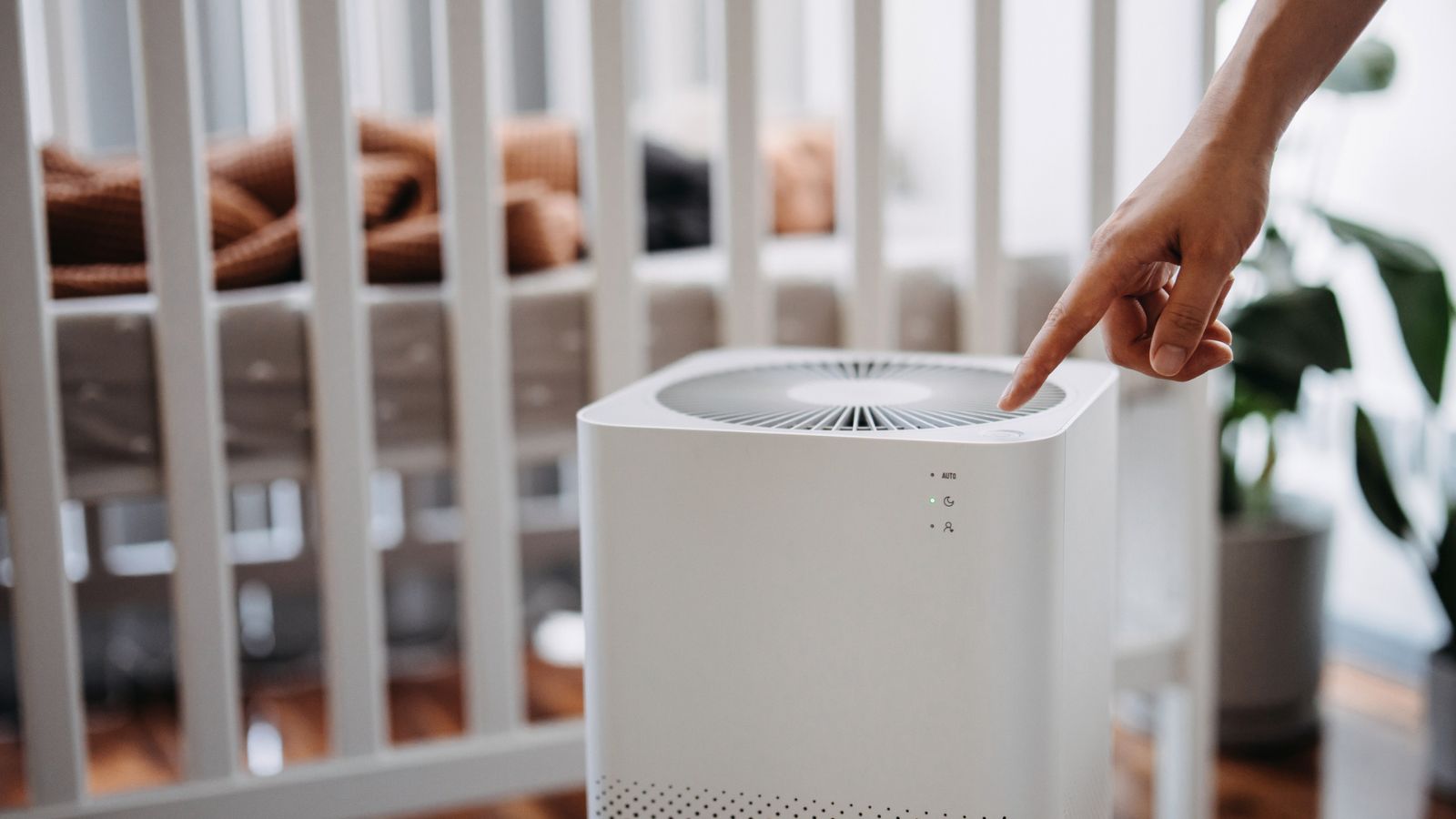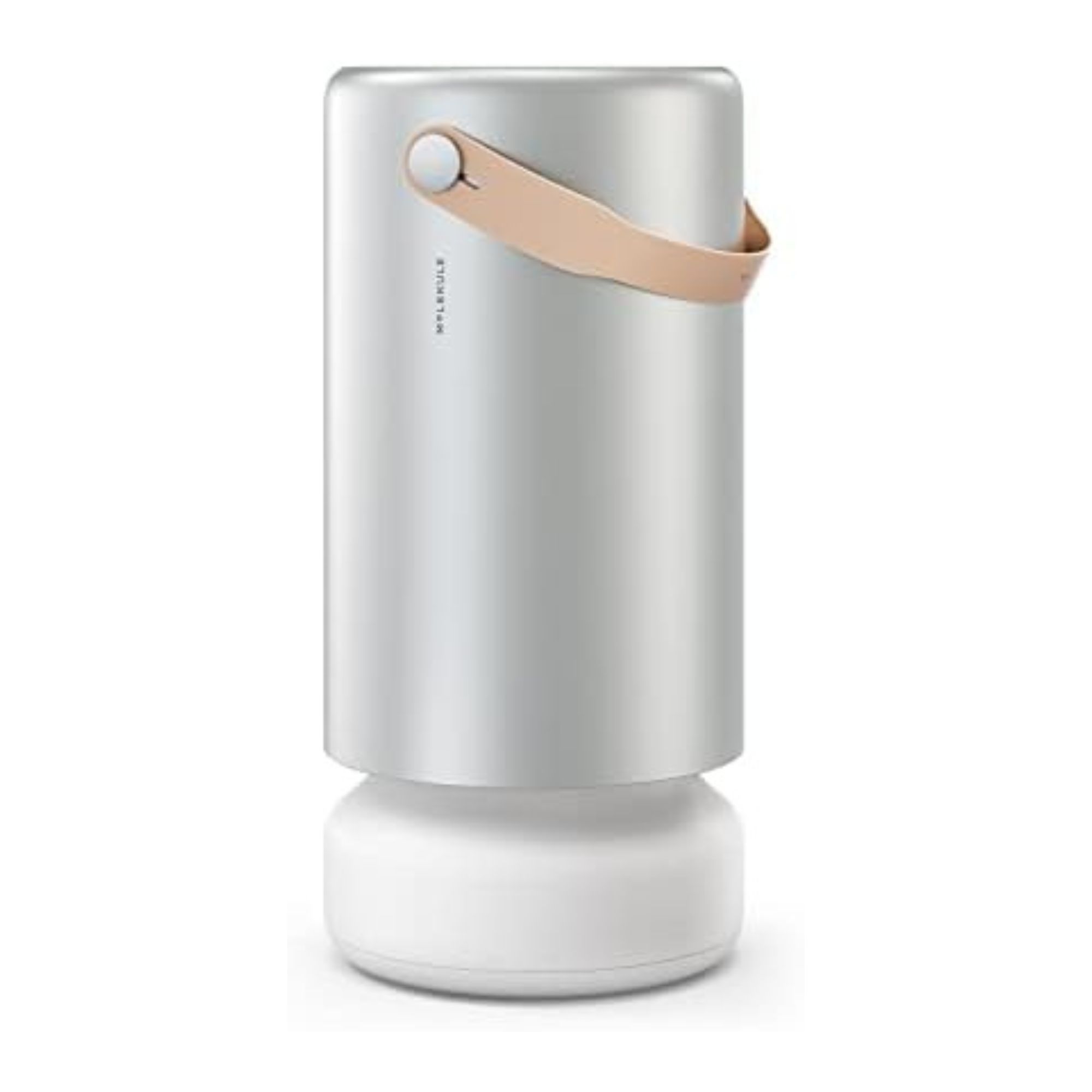How to clean an air purifier in 6 simple steps
Learn how to clean your air purifier so you can continue breathing clean air without the risk of inhaling allergens


It is estimated that the average person takes 20,000 breaths a day, and they may inhale germs, harmful toxins, allergens (dust, mold, pollen), and skin cells in the process. One way to reduce the potential allergens you inhale is by cleaning the air in your home with an air purifier.
Air purifiers work by maintaining indoor air quality and preventing mold growth, and they can be conveniently placed in multiple places throughout your home. Proper maintenance not only extends the lifespan of these units but also ensures they operate efficiently, capturing mold spores and other allergens before they can cause harm.
Cleaning your air purifier is a small investment of time and effort that pays off significantly in the long run, both in terms of air quality and overall well-being.
How to clean an air purifier
Cleaning an air purifier is essential for maintaining its efficiency and extending its lifespan. Below is a step-by-step guide on how to properly clean your unit:
1. Establish A Regular Cleaning Routine

The Dyson Purifier Humidify + Cool Formaldehyde fan.
‘To extend the lifespan of your air purifier, I suggest establishing a regular cleaning schedule,’ says David Sanabria, VP of Hardware Engineering & Technology Advancement at Molekule. ‘Refer to the manufacturer's instructions for guidance, as this may involve disassembling the unit to access internal components.'
Ideally, you want to clean your air purifier once a month or every 2 months to keep it running effectively. It goes without saying that you should always follow recommended safety precautions and manufacturer instructions carefully.

AeroClean Technologies, an air hygiene technology company, and Molekule, a market leader for premium air purifiers, have merged. The combined publicly-traded company, moving forward as Molekule Group, Inc. has the largest range of proprietary and patented, FDA-cleared air purification devices to address the rapidly growing global air purification market.
2. Exterior Cleaning

Start by wiping down the exterior of the air purifier with a damp – but not wet – cloth to remove dust or dirt buildup. Avoid harsh chemicals or abrasive materials, which can damage the unit's surface. Pay attention to vents and grilles; these areas can accumulate dust and debris over time.
Design expertise in your inbox – from inspiring decorating ideas and beautiful celebrity homes to practical gardening advice and shopping round-ups.
The air intake grille is where the air enters the purifier and gets filtered. Use a soft brush, such as this one from Amazon, to gently clean any visible dirt or dust from the grille. Be careful not to press too hard, as it may damage the delicate filters inside.
Regularly vacuum the area around your air purifier to remove dust and debris. This can help prevent these particles from being pulled into the unit and clogging the filters.
3. Filter Replacement
Different models have various filter types, including pre-filters, HEPA filters, and activated carbon filters. Over time, these filters can become clogged, reducing the air purifier's effectiveness. So, in addition to regular cleaning, it's important to clean and/or replace the filters in your unit according to the manufacturer's recommendations.
‘If your air purifier has a washable pre-filter, rinse it under running water or use a vacuum cleaner to remove larger particles,’ says Nick Kornblith, Senior Product Manager at Alen. ‘Ensure it's thoroughly dry before reinstallation.’
While HEPA and carbon filters are typically not washable, gently vacuuming the surface can help remove dust buildup.
It is generally recommended that you change your filters every 12 months.

Alen is an Austin-based innovator of trusted and top-rated True HEPA air purification products—improving lives through safe, healthy, and worry-free air.
4. Maintain Airflow and Air Quality

You must allow proper airflow around the unit to ensure your air purifier is operating efficiently. Do this by placing the unit in a location with adequate space around it and avoid placing objects on top of or directly in front of the unit, as this can restrict airflow and reduce effectiveness.
Keep an eye on the air quality in your home and adjust the settings on your air purifier as needed.
5. Check for Mold and Mildew
HVAC technician Josh Mitchell suggests regularly inspecting your air purifier for mold or mildew growth. If you find any, clean the affected areas with a mild detergent solution or all-purpose cleaner, such as Method Antibacterial All-Purpose Cleaner Spray from Walmart, and allow them to dry thoroughly.
You may also wish to use a dehumidifier in the same room as your air purifier to prevent future mold growth. However, it's important to place them at least 3 - 5 feet apart, as this will allow both units to circulate and treat the air in their vicinity without impacting the output of the other.

Josh is an HVAC expert and the owner of Air Conditioner Lab with years of experience tackling the challenge of home cooling. Josh has explored various innovative methods to cool down living spaces during hot weather.
6. Reassemble and Turn On

When you’re done cleaning and drying the air purifier, it's time to put it back together according to the manufacturer’s instructions. Put the filters in their proper slots or compartments and secure them tightly. Then, fit the outer casing or cover correctly and fasten any screws or clips to make sure it’s snug.
Once you’re done setting up the air purifier, plug it in and switch it on to make sure everything is working fine. Keep an ear out for any unusual noises or vibrations that may indicate a problem with the unit. Let it run for a few minutes and check if the airflow is steady and consistent. If you notice anything odd, make necessary adjustments or troubleshoot.

H&G's top-rated air purifier, the Mila Air Purifier learns the layout of each room and cleans air to a consistently high quality.

This Dyson air purifier detects and destroys formaldehyde, a toxic substance found in home goods and household products so that you can breathe easily.

The Molekule Air Pro cleans more than twice the square footage of a standard purifier, covering spaces up to 1000 sq. ft.
FAQs
What happens if you don't clean your air purifier?
If you do not regularly clean your air purifier, the filters inside the system will eventually become clogged, and there will be a dramatic reduction in the amount of airflow going through the machine. If no more air is traveling through the purifier, then it won't be cleaned.
Combined with other healthy home upgrades, regularly cleaning your air purifier will help improve the quality of the air you and your family breathe daily. Ensure you keep hold of any product warranties, and if your air purifier stops working, contact the manufacturer for guidance on troubleshooting your unit.

Seraphina is a contributing editor at Homes & Gardens, writing Solved features on organizing and storage. She loves to decorate and also grow her own produce from her home in London. Her previous experience includes working at Women's Health and Fabulous Magazine.